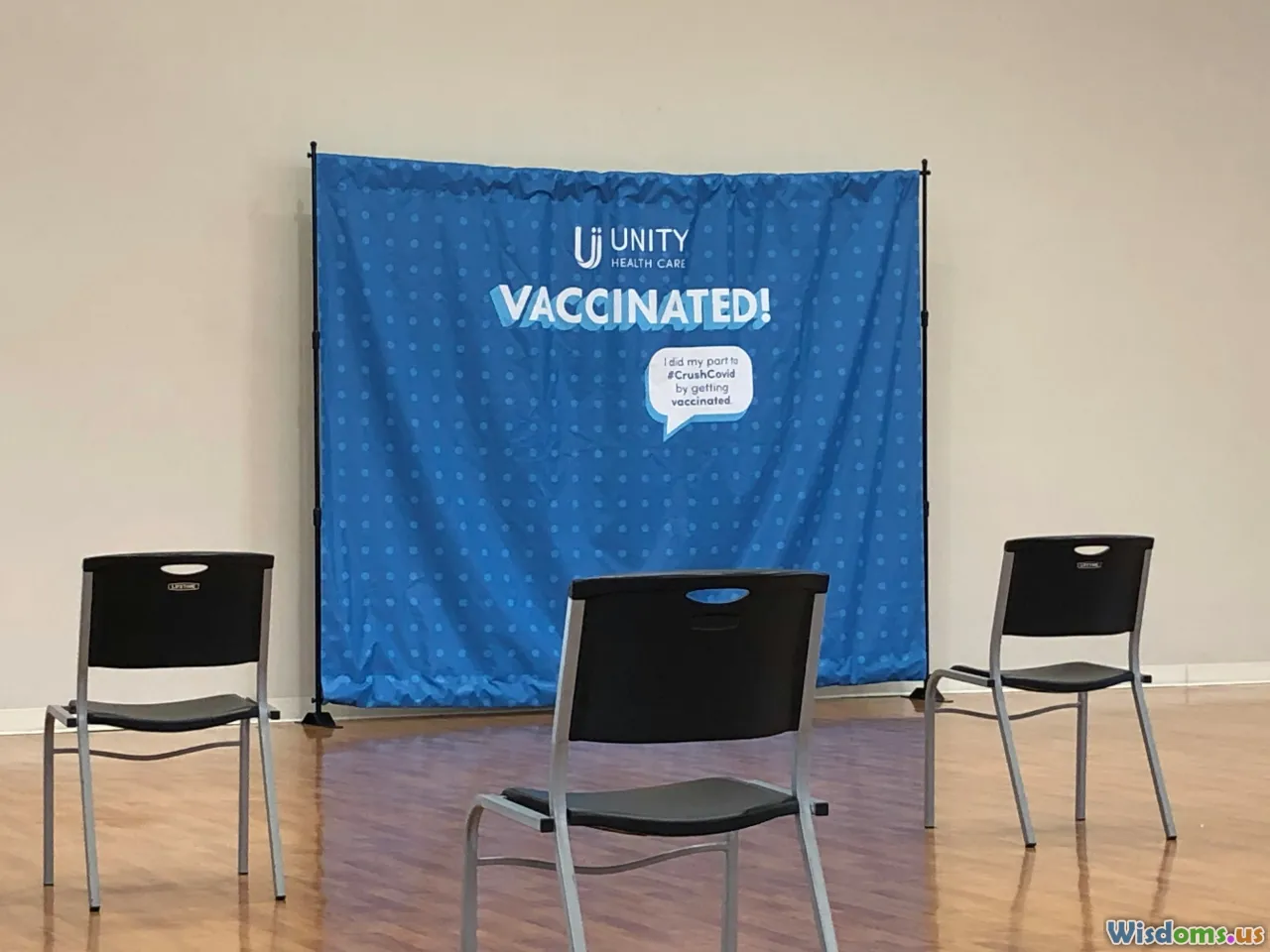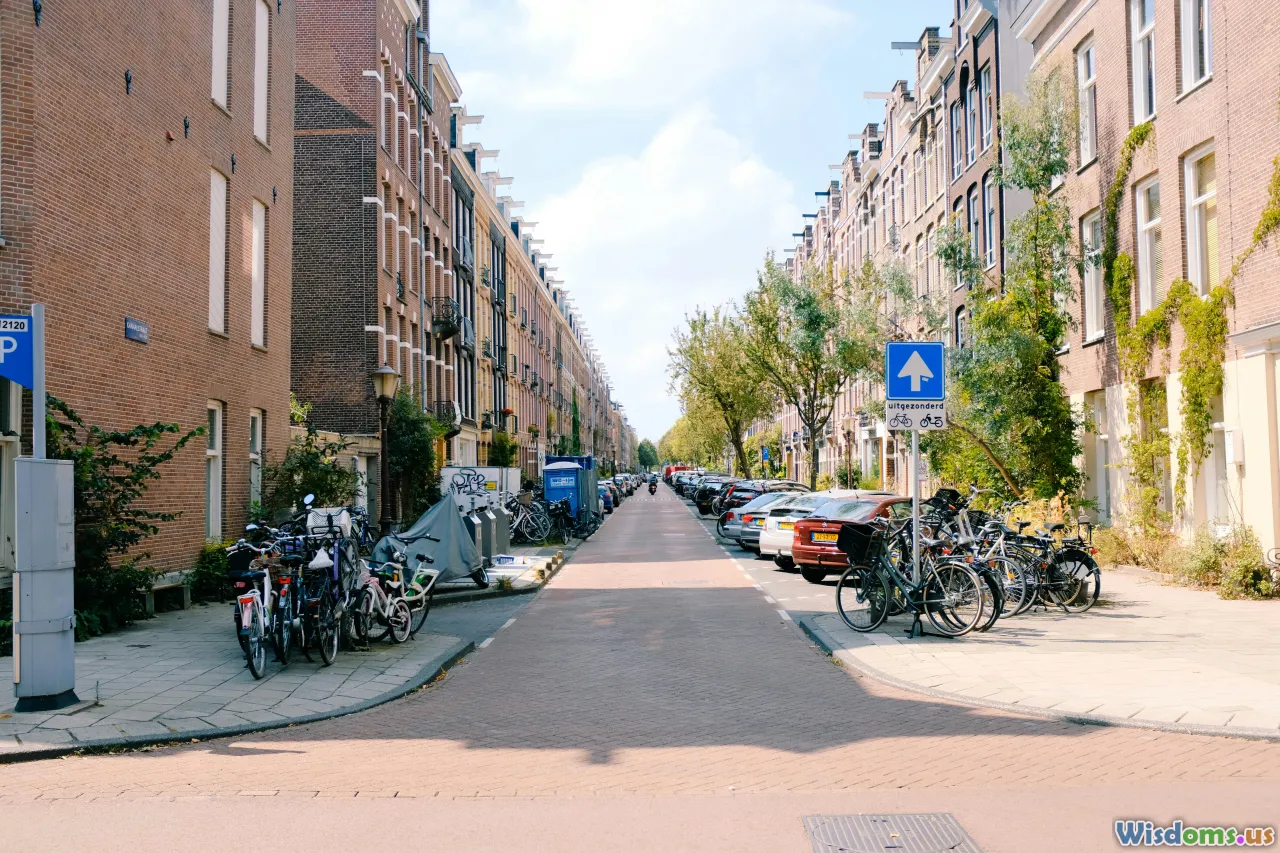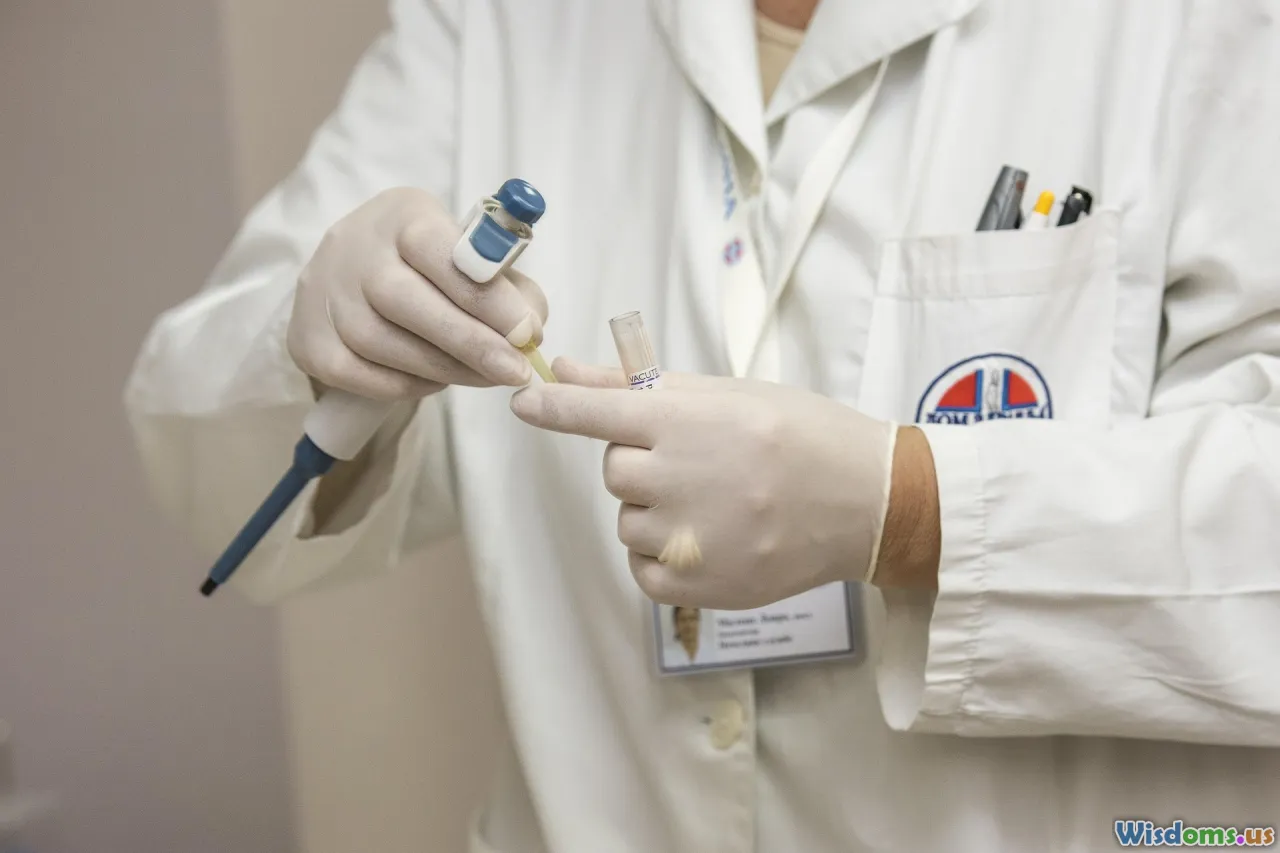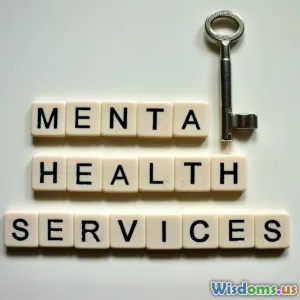
Why Urban Vaccination Rates Lag Despite Free Clinics
15 min read Discover key reasons behind low urban vaccination rates despite accessible free clinics and explore solutions to bridge the immunization gap in city communities. (0 Reviews)
Why Urban Vaccination Rates Lag Despite Free Clinics
Across many bustling metropolitan areas, a perplexing and critical public health problem endures: vaccination rates remain stubbornly below targets, even while free clinics sit ready and accessible. This disconnect vexes city officials and health advocates alike, threatening herd immunity and amplifying risks for all—especially the most vulnerable. What lies beneath this gap, and what can be done to overcome it? Let’s explore the tangled web of social, structural, and psychological barriers shaping urban vaccination uptake.
Decoding the Urban Vaccination Paradox

It’s easy to assume that lower vaccine uptake must be driven by cost or scarce availability, but city dwellers with free clinics within reach prove it's rarely that simple. Recent data from the Centers for Disease Control and Prevention (CDC) shows vaccination rates in some urban ZIP codes trailing 15–20 percentage points behind national benchmarks, even when no-fee services are plentiful within a few blocks.
In Philadelphia, for instance, 2022 city health surveys revealed that childhood immunization coverage hovered at just 73%, despite more than 40 free clinics operating across the city core. A similar story played out in Chicago and Los Angeles. Clearly, an array of unseen roadblocks complicates the path from access to action.
The Role of Mistrust in Medical Institutions

Mistrust of medical systems is arguably the biggest undercurrent stalling vaccination. In many urban locales, past instances of medical bias, under-service, or high-profile health scandals have cultivated community skepticism. Historical events like the Tuskegee Syphilis Study loom large in the collective memory of some neighborhoods, while everyday experiences—rushed appointments, lack of diverse staff, language barriers—reinforce distance and doubt.
A 2023 survey of New York City residents by the Urban Institute found 40% of unvaccinated respondents citing suspicion about vaccines’ safety or efficacy as a main reason for avoidance. These anxieties spanned communities, but were most intense among residents in low-income and minority neighborhoods, where generational memories of medical marginalization persist.
How Some Communities Are Responding
Community-driven education is proving a powerful antidote. When trusted faces—faith leaders, barbers, local teachers—are trained to answer vaccine questions and encourage participation, response rates soar. In Atlanta, a pilot initiative placing public health nurses inside churches and community centers saw a 22% bump in childhood vaccination appointments in six months, according to the Fulton County Health Department.
Takeaway: Trust is incremental. It must be rooted in relationships, transparency, and sustained investment in community health partners.
Transportation, Time, and the Urban Commute Puzzle

Free clinics might be mapped a short subway ride away, but for many city dwellers daily life is governed by razor-thin time margins and substantial mobility challenges. Even with no out-of-pocket costs, the opportunity cost of a clinic visit—lost wages, childcare logistics, or risking losing a gig-job slot—can be steep.
Research from the Brookings Institution showed that over 60% of low-income New Yorkers using free health services also rely on multiple transfers to reach clinics, with total trip times approaching 90 minutes or more. For parents juggling hourly work, multi-generational caregiving, or shift-based jobs, the “free” in free clinics quickly becomes deceptive.
Addressing Structural Barriers
City Health Departments that have experimented with pop-up, school-based, or mobile vaccination clinics often report immediate coverage gains. During Boston’s 2022 booster campaign, mobile vans parked near markets and subway stops administered 3,000 more shots in the first 4 weeks alone compared to stationary clinics downtown.
Tip: Flexible, hyper-local delivery (think: apartment lobbies, playgrounds, local employers) is key when evening or weekend hours align with local commuting patterns.
Information Overload and Ineffective Messaging

Urban environments are a battleground of information—and misinformation. From street billboards and digital ads to rumor-driven social media circles, residents are bombarded with vaccine signals, warnings, and contradictions.
While public health campaigns pour resources into social media infographics, many fail to resonate or provide actionable details. Language gaps persist: New York City’s health website supports over a dozen languages, but on-site signage, consent forms, and staff availability rarely match this multilingual promise.
Real-World Example: Language and Literacy Barriers
In Queens, volunteers from local immigrant organizations translated vaccine FAQs into Farsi and Bengali, pairing them with in-person interpreters at clinics. Uptake among these language groups improved markedly—suggesting that problem-solving requires granular cultural, not only geographic, adaptation.
Actionable Advice: Umbrella campaigns don’t substitute for embedded, personalized conversation. Hiring community liaisons to circulate in housing complexes or markets can close the information gap far more than mass media can.
Social Influence and the Power of Peers

Where crowded neighborhoods cultivate vibrant communities, they also reinforce social influence—positive and negative. Peer pressure, both active and passive, drives health decisions across the lifespan. If trusted colleagues, family, or religious leaders reinforce skepticism or apathy toward vaccines, individuals often follow suit, even if vaccine access is easy.
An analysis of school-based COVID-19 vaccination projects published in the journal Health Affairs noted that schools with established parent groups or faith-based mentors had significantly higher rates than demographically similar schools lacking those connections. Word-of-mouth, shared stories (good or bad), and social media testimonials matter as much as clinic hours or incentives.
Nurturing a Pro-Vaccine Social Norm
Health departments are partnering with local influencers and digitally savvy community groups to spread authentic testimonials and organize “vaccine block parties.” In Houston’s historically Black neighborhoods, a Pfizer-funded initiative invited Black physicians and nurses to share their own vaccination experiences in local Facebook and WhatsApp groups, reaching more than 18,000 community members and inspiring documented upticks in pediatric vaccination appointments.
Bureaucratic Hurdles and Paperwork Anxiety

For those who do head to a clinic, the on-site experience can still derail progress. Lengthy paperwork, poorly explained consent forms, or intimidating identification requests (especially for those with uncertain documentation status) scare many away at the last minute.
For example, a 2021 San Francisco study found immigrant parents disproportionately likely to abort planned immunization visits when asked for multiple proofs of residence or signed insurance acknowledgements, though neither was legally necessary for free vaccines. As a result, clinics updated protocols, posting clear signage explaining that no insurance or documentation was needed, yielding a 17% increase in completed pediatric vaccines in the following quarter.
Streamlining Administrative Processes
- Simplified intake: Pre-filled forms with only essential information reduce wait and confusion.
- Trust cues: Clear, visible signs stating "No insurance or ID required for vaccination" helps relax anxious families.
- Real-time navigation assistance: Assigning greeters who speak the neighborhood’s most common languages boosts confidence and follow-through.
The Hidden Struggles of Housing Instability and Mobility

Urban populations are often highly mobile—not just shifting from neighborhood to neighborhood, but enduring frequent moves driven by evictions, rent increases, or shelter placement. Every relocation severs ties with local clinics and disrupts follow-up notifications, reminders, or scheduled booster shots.
The National Low-Income Housing Coalition estimates that, as of 2023, over 40% of families utilizing emergency shelters in Boston with school-aged children had also fallen behind on adolescent vaccination schedules. Inconsistent addresses mean families miss important mailers or digital reminders, while anxiety about interacting with bureaucracy leads many to deprioritize preventive healthcare.
Competing Priorities: When Survival Trumps Prevention

For low-income urbanites, every day brings tough choices between work, schooling, childcare, rent, and safety. Preventive care like vaccinations may not rise high enough on the to-do list, especially when arranging time off risks missing a paycheck or incurring logistical chaos.
Real-world case studies from Baltimore offer sobering context. Social workers at two city clinics reported that many single parents repeatedly deferred child vaccines during periods when rent spikes, food stamps delays, or school closures demanded every available resource. Interviews noted that “until there’s breathing space at home, getting ahead on vaccines just doesn’t feel feasible.”
How Clinics Can Help
Solutions include offering after-hours or walk-in-only clinics, pop-up tent sites tethered to food pantries or job training centers, and combining immunization with other pressing errands—like school enrollment or public assistance sign-ups—to meet people where their real priorities lie.
Emotional Resonance: Anxiety, Fear, and Bad Past Experiences

Fear remains a potent barrier. Stories of adverse reactions, needles, or unwelcoming clinics linger in many residents’ minds. Even a single negative experience—like being brushed aside by a harried receptionist or witnessing a painful moment—can color future decisions for years.
In urban areas, myths abound. A 2022 investigation by Kaiser Health News found that viral TikTok clips exaggerating potential vaccine side effects had been viewed more than 50 million times among urban teens in just one quarter. Health departments are now racing to counter fear-driven stories with authentic, reassuring testimonials and relatable pediatric healthcare ambassadors.
Practical Anxiety-Reducing Strategies
- Warm, welcoming "shot clinics": Decorated children’s vaccination tents, music, cartoon mascots, and stress calming tools can transform the experience, as seen in Seattle’s "Vaccine Fest" events.
- Training clinic staff: Empathetic customer service training enables medical teams to recognize and defuse anxiety proactively.
Toward a New Urban Vaccination Playbook

Free clinics alone can’t solve the urban vaccination puzzle—broader, bolder strategies are required. Cities that succeed will be those that:
- Embed healthcare teams within the local community fabric for the long haul—not just for crisis sprints.
- Foster authentic trust by hiring and training staff who reflect neighborhood culture and language.
- Go mobile and modular, bringing vaccination to subway stops, food distribution centers, community celebrations, union halls, and schools.
- Simplify every clinic touchpoint, from paperwork to signage to follow-up notifications.
- Double down on creative outreach—leveraging peer leaders, influencers, personal stories, and positive social proof to tip urban norms toward proactive prevention.
As the world grows more interconnected—and the risks of infectious diseases ever harder to quarantine—boosting urban vaccination rates is both a moral and pragmatic imperative. The real progress lies not in merely expanding clinic numbers, but in tightly braiding preventive health into the organic realities of city life.
Health is built together, block by block—starting with trust, access, relevance, and empathy in every urban neighborhood.
Rate the Post
User Reviews
Other posts in Public Health & Policy
Popular Posts















